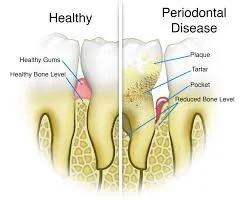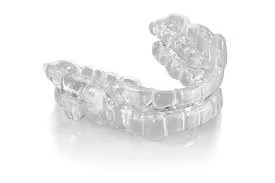
Children's Dentistry
Children's Dentistry
When Should I Bring my Child for their first dental appointment?
A good rule of thumb is when the child’s first tooth erupts, or by their first birthday they should be evaluated by a dental professional. Good oral hygiene practices are very important to incorporate as teeth are erupting. We recommend using an infant gum massager or clean gauze to wipe your child’s gums as well as gently brushing the gums. By the age of 2 years old, you can start using a gentle toothpaste and brushing along the surfaces of the teeth.
It’s important to develop positive experiences around dentistry to help avoid the development of dental anxiety. Dental anxiety affects a large number of children and adults. Bringing your child to a patient-centric, family-friendly Henderson dental office like Horizon Ridge Dental sets them up with happy memories for a lifetime of regular checkups.

Dental Cleanings
Dental Cleanings
The ADA recommends that regular dental cleanings should be completed at least every 6 months. If you are overdue for a dental cleaning or simply ready for a new Henderson dentist call Horizon Ridge Dental to set up an appointment. With our office, you’ll enjoy a patient-centric experience that focuses on your entire mouth and overall oral health. Our patients are family, and if you haven’t experienced our unmatched service and comprehensive care, it’s time to stop by and find out what we’re all about.
DO I REALLY NEED TO SEE A DENTIST EVERY SIX MONTHS?
Yes, and not just because we love seeing our patients. Continuous six month dental visits incorporate both a necessary cleaning and an important exam. The cleaning focuses on removing built-up tartar and plaque that can lead to bad breath and more serious problems. The exam, on the other hand, allows Dr. Schmitt to identify problems at their earliest stages and make treating those issues simpler and less costly to you. Many oral health concerns can be treated, and their effects reversed if caught in the early stages

Gum Disease Treatment
Gum Disease Treatment
SYMPTOMS OF PERIODONTAL DISEASE
Gum disease is a condition in which bacteria build up below the gums causes bone loss around the teeth. Often the condition is not painful, however if left untreated can cause gum infections and tooth loss.
Here are a few things to look out for that might be the first warning signs of a problem:
Excessive bleeding from the gums while brushing or flossing
Gums that are tender and/or swollen
Bad breath that will not go away
Gums that start to recede or separate from the tooth
A change in the way the top and bottom teeth fit together
Teeth start feeling loose for no other obvious reason
Stages of Gum Disease
Gingivitis. The symptoms are not always easy to spot, but some bleeding and swelling of the gums might mean you have gingivitis. The good news is gingivitis does not affect the bone or nearby tissue and it is reversible if treated.
Periodontitis. If gingivitis is not treated, however, it can become periodontitis. Periodontitis is an infection that damages the soft tissue around the teeth. Without treatment periodontitis will destroy the bone that supports the teeth.
Advanced Periodontitis. At this advanced stage, the gum infection is so severe that the structural integrity of the teeth is compromised. Teeth may be loose or painful when functioning.
TREATMENT OF PERIODONTAL DISEASE
In the early stages, gum disease can be treated in our office by Dr. Schmitt, who will suggest a procedure known as scaling and root planing. Scaling and root planing involves using an ultrasonic scaler to remove plaque, tartar and debris above and below the gum line. Disrupting the bacteria colonies will reduce gum inflammation, bleeding and reduce the progression of the disease.

Oral Cancer Screening
Oral Cancer Screening
At every visit, Dr. Schmitt performs a comprehensive oral cancer screening. Oral cancer screenings include examination of the sides of the tongue, floor of the mouth and a physical check of your neck, jaw and lymph nodes to search for any lumps or bumps.
WHAT IS ORAL CANCER?
Like any other form of the disease, oral cancer involves healthy cells undergoing dysplastic changes. This occurs most often around the lips, tonsils, tongue or other tissues inside the mouth. The cancer can be harmful enough without spreading, with the American Cancer Society reporting around a 25 percent mortality rate.
SYMPTOMS OF ORAL CANCER
The signs of oral cancer can be difficult to spot. This is another reason why staying regular with your checkups and cleanings is so important. If you do notice any of the following, please call us today to make an appointment:
Flat red or white sores on your lips or in the mouth
Visible lumps in your throat or mouth
Tenderness or numbness in your mouth or tongue
Trouble chewing or moving your tongue
RISK FACTORS
There are several behaviors that have been found to dramatically increase your chances of being diagnosed with oral cancer. Those include:
Tobacco use of any kind (including smoking, chewing, etc.)
Heavy alcohol consumption
Excessive sun exposure without protection
Poor nutrition
Physical inactivity

Sleep Apnea
Sleep Apnea
WHAT CAUSES SLEEP APNEA?
Obstructive sleep apnea occurs when the tongue and throat muscles relax during sleep and temporarily narrow or block the airway. This blockage causes oxygen levels in your blood to drop and is the leading cause of fragmented or disrupted sleep patterns. When your brain senses this, it momentarily wakes you to breathe and raise the blood oxygen saturation. This “wake up call” your body does can happen hundreds of times a night. While many do not remember the arousal, it still interrupts the desired level of sleep we need for our bodies to repair and rejuvenate. This leads to the sluggish and tired feeling many have when they wake each day.
RISK FACTORS OF OSA
Men, women, children and adults can all suffer from sleep apnea. Risk factors that put you at an increased risk can include:
OVERWEIGHT
FAMILY HISTORY
OBSTRUCTED NASAL PASSAGE
ALCOHOL, SEDATIVES AND TRANQUILIZER USE
SMOKING
NARROW AIRWAY
LARGE NECK CIRCUMFERENCE
SLEEP APNEA TREATMENT
The severity of your sleep apnea will determine what type of treatment you will receive. Treatment ranges from lifestyle adjustments to oral appliance therapy to CPAP devices. In extreme cases surgery may be required. For mild to moderate cases, oral appliance therapy is a highly effective option. This custom fitted device will reposition your jaw while you sleep so you can obtain a full nights rest and alleviate snoring.



